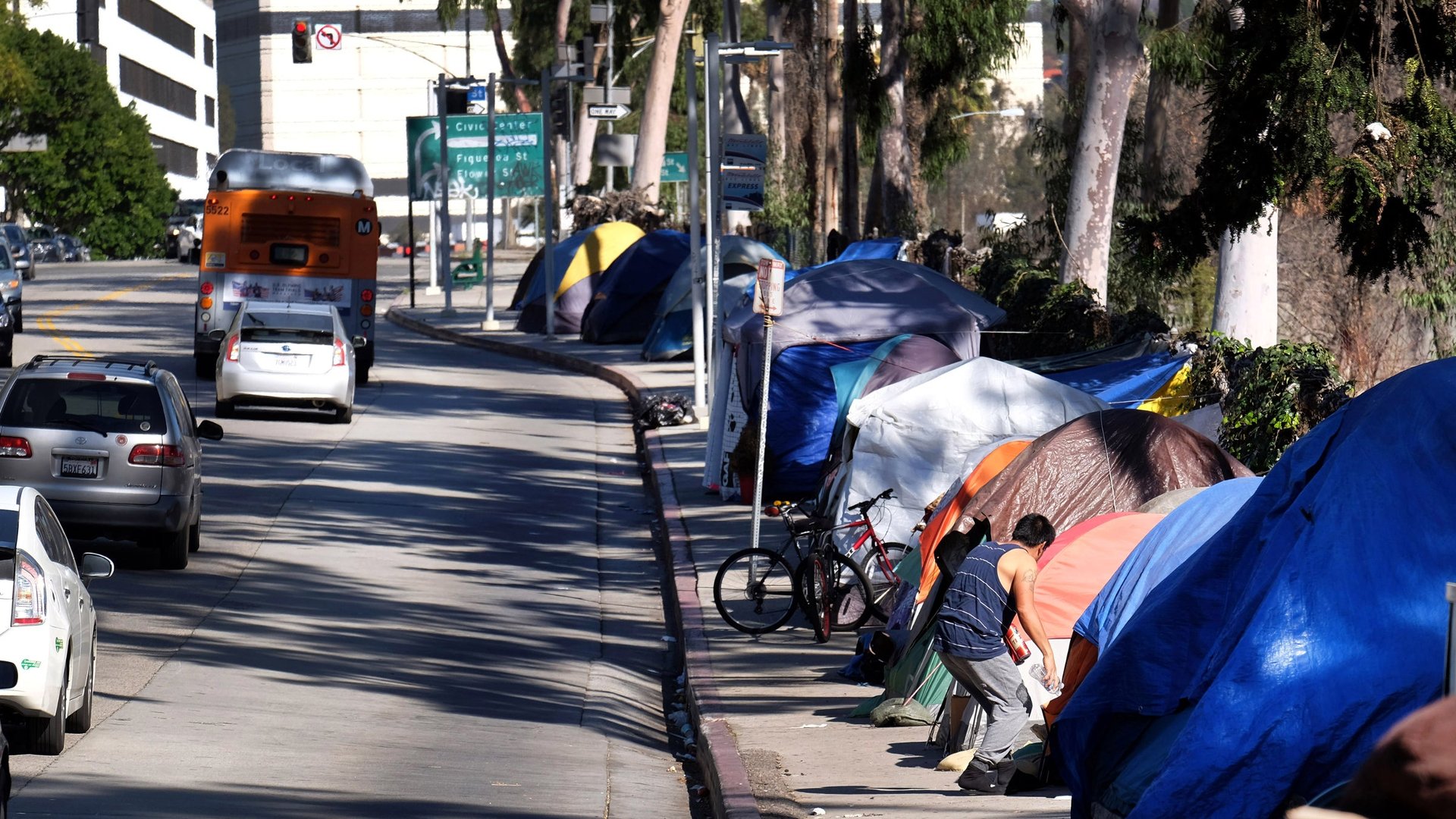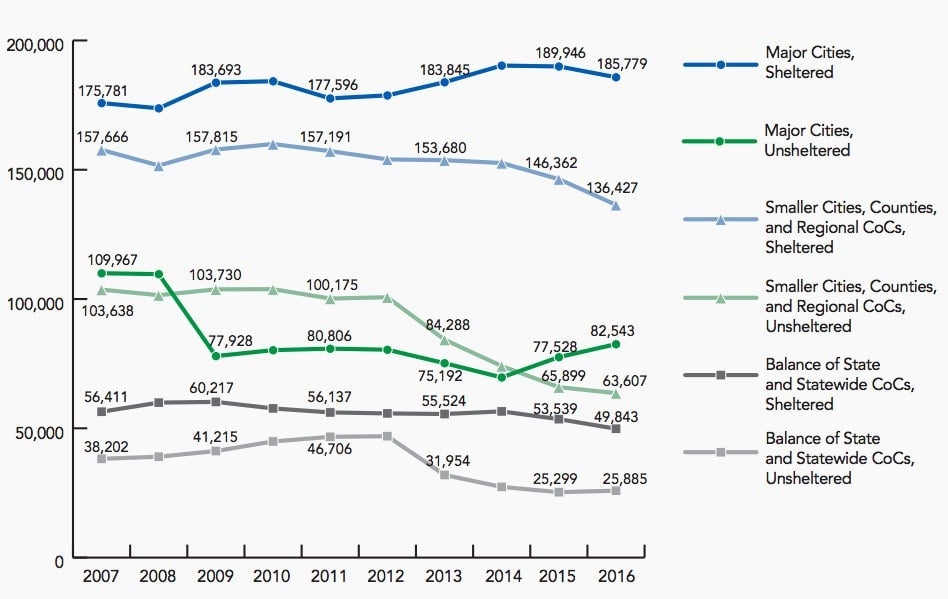The good news and bad news about homelessness in America in 2016
Homelessness in the US has dropped 15% since 2007, with 97,000 fewer Americans living on the streets or in shelters, according to a year-end report (pdf) from the Department of Housing and Urban Development,


Homelessness in the US has dropped 15% since 2007, with 97,000 fewer Americans living on the streets or in shelters, according to a year-end report (pdf) from the Department of Housing and Urban Development,
It’s a nice metric for the Obama administration to leave office on, but it’s worth asking what happened, because when you dig into the figures, there’s still plenty of trouble to find.
The biggest decline (31%) in the homeless population, according to the report, came in unsheltered populations. These are people living on the streets or in parks, vehicles, or other places not designated for sleeping, as opposed to those in emergency shelters or transitional housing. Unsheltered homeless tend to be concentrated in smaller cities or less populated regions. And that helps us understand what’s happened since 2007: That year saw the height of the housing bubble, with some of the highest home prices in US history. It also was also the first year when many buyers who purchased homes with loans they couldn’t repay came face to face with that fact—the foreclosure rate doubled.
With homes expensive and people being kicked out of them, we would expect homelessness to be fairly high. But as home prices fell throughout the recession, even as the economy recovered, we should expect more people to find homes. And the report suggests this was the case: The states with some of the biggest reductions in homelessness in the last nine years include those hardest hit by the housing bubble in 2007, like California, Florida, and New Jersey.
This year, home prices in a national index once again reached the levels of 2007. But today’s housing market, troubled as it is in some areas, is not as dependent on toxic loans, and its foreclosure rate is much lower.
This isn’t the whole story, though. While homelessness has fallen in smaller cities and less-populated regions, the trend is different in major cities where affordable housing has become increasingly expensive. There are more people living in urban homeless shelters in 2016 than in 2007, and the number of unsheltered homeless in major cities has increased for two years running:

That’s why we see the biggest increases in the homeless populations in places like New York, Massachusetts, and Washington DC, all of which are places with increasingly expensive urban housing. If you dig down into the data, you see that while California has seen an overall reduction in homelessness since 2007, San Francisco saw a 22% increase.
These statistics seem to capture the changing problems of the US housing market. In 2007, irresponsible loans inflated a bubble that made homes tougher to afford and made those who purchased them more likely to default and lose their homes. In 2016, the problem of affordability is simply that too many people want to live in the most economically dynamic cities, and there just aren’t enough affordable homes for them to live in.